
Very Clumsy Click Beetle 笨拙的磕头虫
¥ 90 4.7折 ¥ 190 全新
仅1件
作者Eric Carle(艾瑞克·卡尔) 著
出版社Penguin
出版时间1999-09
版次1
装帧精装
货号G1534
上书时间2024-11-16
- 店主推荐
- 最新上架
商品详情
- 品相描述:全新
图书标准信息
- 作者 Eric Carle(艾瑞克·卡尔) 著
- 出版社 Penguin
- 出版时间 1999-09
- 版次 1
- ISBN 9780399232015
- 定价 190.00元
- 装帧 精装
- 开本 16开
- 纸张 胶版纸
- 【内容简介】
- Finally, here's a brand-new book in Eric Carle'sextraordinarily popular Very series. And with a new surprise!When alittle click beetle falls onto his back, it seeks the help of awise old click beetle. "Look at me," says the more experiencedclick beetle, giving a loud CLICK and flipping onto its feet. Buttry as it might, the clumsy little click beetle just can't seem toland feet first--or can it?In the tradition of The Very HungryCaterpillar Carle creates a winning story of perseverance and pridein achievement complete with an ingenious surprise that truly givesvoice to the valiant little beetle as it CLICKs its way through thecolorful pages and somersaults into your heart
- 【作者简介】
-
Name: Eric Carle Biography Ever since he began innovating thelook and function of children's stories in the late 1960s, EricCarle has remained an author whose stories reliably hit thebestseller lists and remain on kids' bookshelves throughgenerations. He began as a designer of promotions and ads, and oneillustration of a red lobster helped jump-start his career. Thelobster caught the eye of author Bill Martin, Jr.; Martin askedCarle to illustrate the now-classic 1967 title Brown Bear, BrownBear, What Do You See? and a career was born. Born in Syracuse, NewYork but brought by his immigrant parents back to Germany when hewas six, Carle was educated in Stuttgart and designed posters forthe United States Information Center there after graduating fromart school. He finally returned to the country he missed so much asa child in 1952. He eventually began procuring work on children'stitles, and found himself becoming increasingly involved in them."I felt something of my own past stirring... read more Name: EricCarle Current Home: Northampton, Massachusetts and the BerkshiresDate of Birth: June 25, 1929 Place of Birth: Syracuse, New YorkEducation: Akademie der bildenden Künste, Stuttgart, 1946-50 *EricCarle'sofficial web site Biography Ever since he began innovatingthe look and function of children's stories in the late 1960s, EricCarle has remained an author whose stories reliably hit thebestseller lists and remain on kids' bookshelves throughgenerations. He began as a designer of promotions and ads, and oneillustration of a red lobster helped jump-start his career. Thelobster caught the eye of author Bill Martin, Jr.; Martin askedCarle to illustrate the now-classic 1967 title Brown Bear, BrownBear, What Do You See? and a career was born. Born in Syracuse, NewYork but brought by his immigrant parents back to Germany when hewas six, Carle was educated in Stuttgart and designed posters forthe United States Information Center there after graduating fromart school. He finally returned to the country he missed so much asa child in 1952. He eventually began procuring work on children'stitles, and found himself becoming increasingly involved in them."I felt something of my own past stirring in me," he wrote in a2000 essay. "An unresolved part of my own education neededreworking, and I began to make books -- books for myself, books forthe child in me, books I had yearned for. I became my own teacher-- but this time an understanding one." He began his career withthe 1968 title 1, 2, 3 to the Zoo; but his next title, The VeryHungry Caterpillar, is what still endears him to young readerstoday. Employing his bright, collage style and lending an immediacyto the tale by manifesting the caterpillar's hunger in actual holesin the pages, Carle began what would be a long career of creativeapproaches to simple stories. From the chirp emerging from The VeryQuiet Cricket to the delightful fold-out pages in Papa, Please Getthe Moon for Me, Carle's books provide surprises that make hisstories come alive in ways that many titles for preschoolers donot. Carle's style, with its diaphanous, busy and bold artwork, isperfect for engaging new readers. His stories are also popular withparents and educators for their introductions to the natural worldand its cycles. It's a particular pleasure to follow Carle intodifferent corners of the world and see what can be learned from thecreatures who live in them. Good To Know Regularly asked where hegets his ideas, Carle is quoted on his publisher's web site asresponding: "Of course, the question of where ideas come from isthe most difficult of all. Some people like to say they get ideaswhen they're in the shower. That's always a very entertaininganswer, but I think it's much deeper than that. It goes back toyour upbringing, your education, and so forth." He does say,however, that the idea for The Very Hungry Caterpillar came when hewhimsically began punching holes in some paper, which suggested tohim a bookworm at work. His editor later suggested he change thebookworm to a caterpillar, and the rest is history. Carle wasunhappy to be in Germany when his immigrant parents brought himback there as a child. He hated his new school and wanted to goback to America. He said: "When it became apparent that we wouldnot return, I decided that I would become a bridge builder. I wouldbuild a bridge from Germany to America and take my beloved Germangrandmother by the hand across the wide ocean." Before he became afreelance illustrator and began working on children's books, Carleworked as a graphic designer for the New York Times and as artdirector of an ad agency. Feature Interviews In 1999, Carle spokewith Barnes & Noble.com about his inspirations, his stories,and what was potentially his last "Very" book, The Very ClumsyClick Beetle. From The Very Hungry Caterpillar to The Very LonelyFirefly, Eric Carle's bestselling "Very" books have dazzled anddelighted kids everywhere. Now Carle's created a brand-new "Very"book about a clumsy little click beetle who can't seem to land onhis feet. However, when it matters most, he finally succeeds --saving his own life in the process. This winning story ofperseverance and pride in achievement also has an ingenious,interactive surprise -- a hidden sound chip provides an audible"click" each time the reader turns the page. How did you come upwith the idea for The Very Clumsy Click Beetle? I like little bugsand insects, and I know that they have become my signatures -- butit's not an artificially arrived-at signature. I grew up fascinatedby little worms, bugs, and insects. I suppose my father had a lotto do with it.... In our walks around the garden, he would pointout these little insects to me. Maybe it was because in Germany wedidn't have elephants, giraffes, or other large animals, so I hadto settle for liking little creatures-ants, worms, and bugs. Butdon't you think that most little boys and little girls seem to havean interest in them, too? There are so many surprising things aboutinsects -- their life cycles, for instance. Some, like cicadas,take seven years to hatch, and then only live for a week or so! Whywould nature do that? Recently, I was reading about butterflies,and to my surprise, I discovered that one species is carnivorous!It eats other insects. And ants are amazing! There are so manydifferent kinds of ants in the same colony, each with its ownspecialization -- builders, fighters, food hunters, and harvesters-- some even build mushroom cellars! Fascinating! The click beetlemight seem at first like a dull little guy, but it has thisremarkable ability to flip through the air, and I found that veryinteresting. I learned that adult click beetles have this wonderfulability, but do you know that they land on their feet only 50percent of the time? One out of two attempts is not successful.Don't you think that's strange? What did nature have in mind whenit designed a bug that has only a 50 percent chance of getting outof harm's way? The click beetle is an insect I had been thinkingabout for some time. Perseverance seemed to be the natural theme.Because click beetles land on their feet only 50 percent of thetime, it takes perseverance to get really good at it. Of course,that is an anthropomorphic point of view. My little insects aremetaphors for children, who have the same problems of learning towalk, to talk, to run, etc. So the importance of stick-to-itivenessbecame the theme for The Very Clumsy Click Beetle. Do you have afavorite animal? No, I like to learn about all animals and insects.How long did it take to produce The Very Clumsy Click Beetle? TheVery Clumsy Click Beetle has gone through the same process thatmost of my books do. An idea begins with a blip, a fragment thatgradually grows. It grows sometimes quickly, sometimes slowly (someideas never mature) -- parts of it develop effortlessly, otherparts develop painfully. Sometimes I feel it's the best ever, orthe worst ever. This process can take a year or more, steadily onand off. The production of The Very Clumsy Click Beetle embodiedthe message of perseverance. Because of technical difficulties thepublication date was delayed one full year. But we (publisher,printer, binder, and I) did, in the end, make it work. When did youstart doing collage art? Is this your favorite medium to work in-oris it because it's your trademark that you continue to illustratein this style? I learned collage in art school. After art school Iwas a poster artist. I always liked big, bold images, which areimportant in poster design. I love to do collages -- the wholeprocess of it -- painting tissue papers, storing them, handlingthem, cutting and tearing out shapes. When you were a child, didyou always know you'd be an artist of some sort? Did your parentsencourage you? Yes. Before I knew the word "artist" or the conceptof art, I knew I would draw pictures. It was my favorite occupationat that time of my life. My parents were very supportive, and myrelatives brought me watercolors and papers and crayons. My motherwould proudly show off my work to anyone who happened to come by.Your books are so intuitive about children's thoughts and feelings.How do you know so well what will touch and engage kids? Theunderlying topics that are addressed in each of the books youmention are indeed very basic and universal desires and needs. Verybasic ideas. In the books, these lessons are camouflaged, are notdidactically presented; they are not the primary concerns of mybooks. The primary concern is to tell a good story, to impart justsheer fun and then, secondarily, to educate or to convey someuseful idea. In part, the ideas come from my own philosophicalthoughts and musings. My ability to write them simply and in a waythat children can easily understand is intuitive. I try not tointellectualize too much about the ideas in my books. I do remembermy own childhood feelings and emotions quite clearly; perhaps thishelps me to understand the basic needs and interests of the youngchildren for whom I create my books. Other than that, I reallydon't know how I do it. Either you have intuition or you don't. Andyou have to trust your intuition, too. Trust that it's not going tolead you away from the point you are trying to make, and trust thatit is correct in terms of the child reader. Because you'veestablished such a stellar reputation, do you find it is moredifficult to create books (i.e., a lot is expected of you)-or infact, is it easier (i.e., you have more clout, so you can do whatyou want)? Sometimes I am convinced that I will not do booksanymore, but then I come up with an idea -- what can I do? Yes, alot is expected of me and yes, I do have some clout. That is thetime to be most careful. But my state of mind (working,illustrating, writing) while I am doing a book has never changed.Are you planning to do more "Very" books in the future? Are youworking on any other books now? I'm not planning more "Very" books.And yes, I am working on other books, but will not mention them. IfI do, I'll put a hex on them.
艾瑞·卡尔
1929年6月25日出生于美国纽约州的锡拉丘兹。他的父母都是德国人,6岁时,随父母一起搬回到了德国。艾瑞克·卡尔讨厌德国式的教育,16岁那年从高中退学,在老师的劝说之下,在斯图加特一所有声望的美术学校学习了四年的视觉艺术。还是在学期间,就为美国情报中心绘制了一系列的海报。毕业后,他曾在一家时尚杂志担任艺术指导,但他太怀念儿时美国那间洒满了阳光、可以自由画画的教室了,太想回美国了,终于在1952年23岁那年,兜里揣着四十美元,又一个人回到了阔别了十七年的纽约。他给当时担任《财富》杂志艺术总监、后来以《小蓝和小黄》《小黑鱼》等作品闻名于世的李欧·李奥尼打了一个电话,李欧·李奥尼不但请他吃了一顿午饭,还给他介绍了一份工作。
他年近四十才开始创作图画书,迄今为止,已经创作了《棕色的熊,棕色的熊,你在看什么?》(Brown Bear, BrwonBear, What Do You See?,1967)、《1,2,3,去动物园》(1,2,3 To TheZoo,1968)、《好饿的毛毛虫》、《好忙的蜘蛛》(The Very BusySpider,1985)、《爸爸,请为我摘月亮》(Papa, Please Get The Moon ForMe,1986)等七十多本色彩缤纷的拼贴画风格的图画书,被翻译成了三十多种语言,小读者遍布世界各地。2002年12月,他的个人美术馆——艾瑞克·卡尔图画书美术馆在马萨诸塞州开馆,这也是美国的第一个图画书美术馆。
不过,在很长的一段时间里,他的图画书并没有得到应有的评价,他甚至没有得到过凯迪克奖,这是因为批评家们不喜欢把书降低到像玩具一样的位置。2003年,为了弥补这一缺憾,美国图书馆协会授予他劳拉·英格尔·槐尔特奖,这也可以算是对他作品的艺术性表示的一种迟到的承认吧。
现在,他和妻子芭芭拉住在马萨诸塞州的北安普敦市。
相关推荐
-

Very Clumsy Click Beetle 笨拙的磕头虫
九品北京
¥ 70.00
-
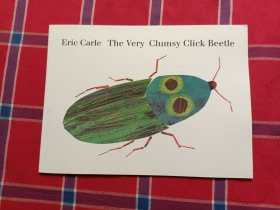
Very Clumsy Click Beetle 笨拙的磕头虫
九品北京
¥ 4.00
-
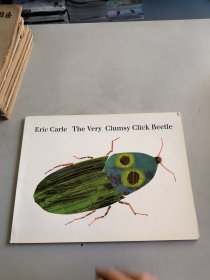
Very Clumsy Click Beetle 笨拙的磕头虫
八五品重庆
¥ 5.00
-
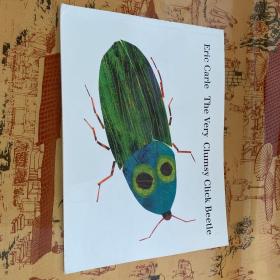
Very Clumsy Click Beetle 笨拙的磕头虫
八五品廊坊
¥ 9.00
-
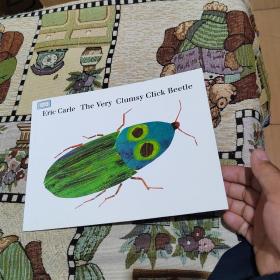
Very Clumsy Click Beetle 笨拙的磕头虫
八五品北京
¥ 8.00
-
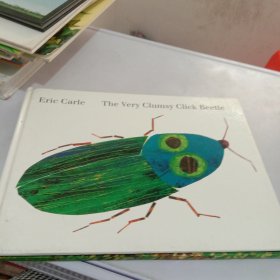
Very Clumsy Click Beetle 笨拙的磕头虫
八五品保定
¥ 7.00
-

Very Clumsy Click Beetle 笨拙的磕头虫
八五品张家口
¥ 8.00
-

clumsy crab
八五品苏州
¥ 10.00
-

英文原版 The Very Clumsy Click Beetle 笨笨的叩头虫 精装绘本 发音书 艾瑞卡尔 Eric Carle 英文版 进口英语原版书籍
九五品广州
¥ 98.00
-

英文原版 The Very Clumsy Click Beetle 笨笨的叩头虫 精装绘本 发音书 艾瑞卡尔 Eric Carle 英文版 进口英语原版书籍
九五品成都
¥ 98.00
— 没有更多了 —




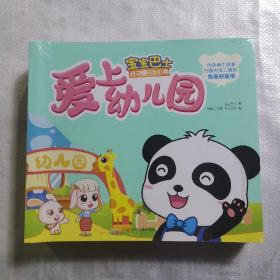











以下为对购买帮助不大的评价